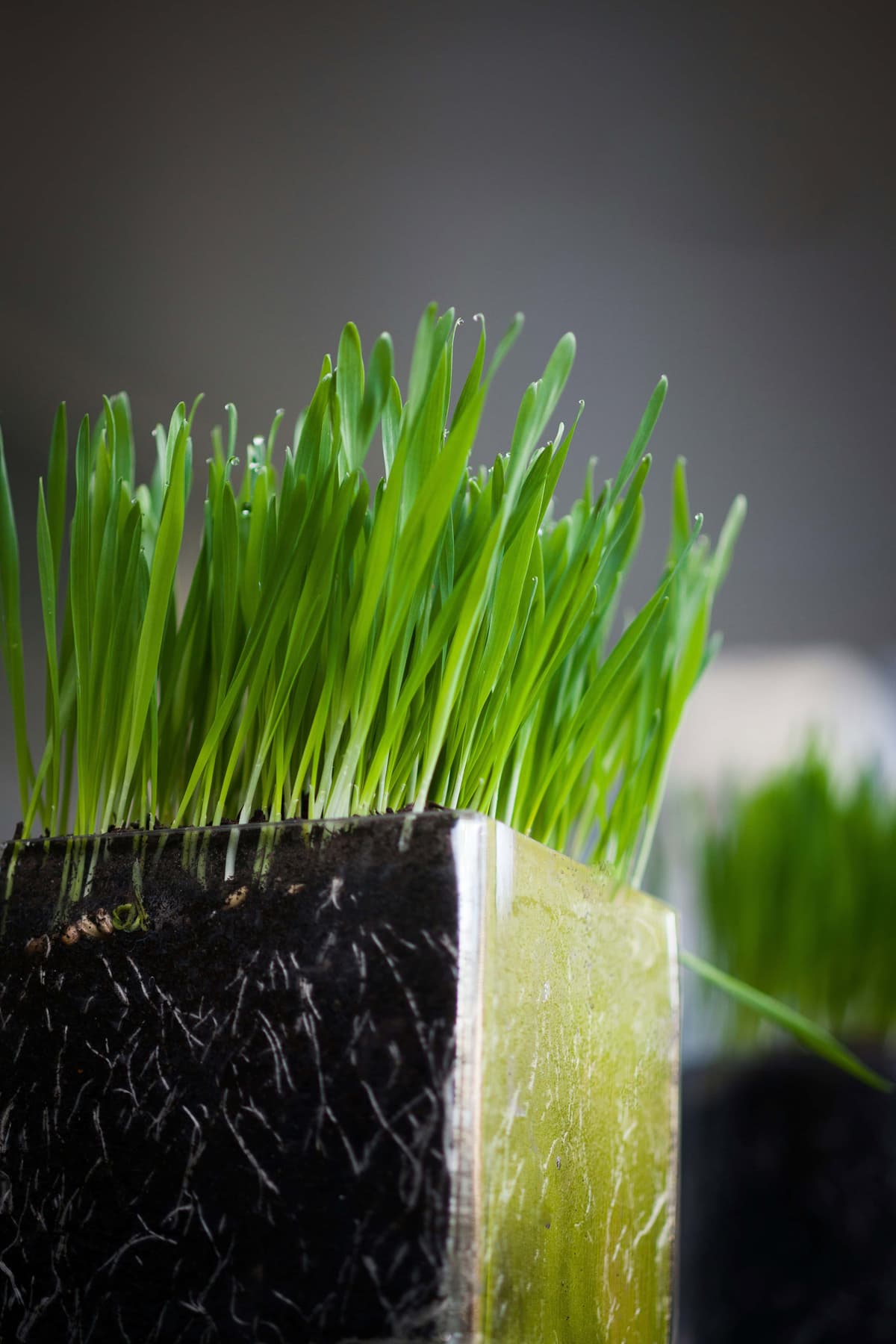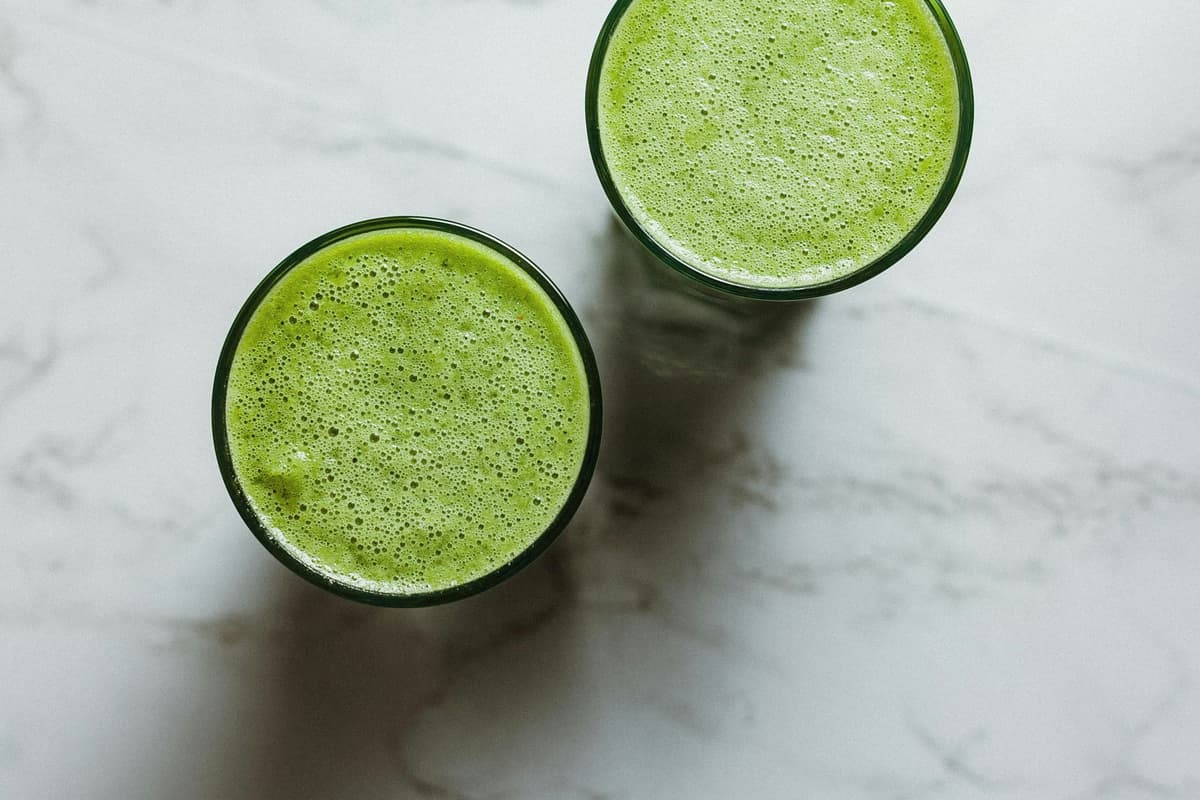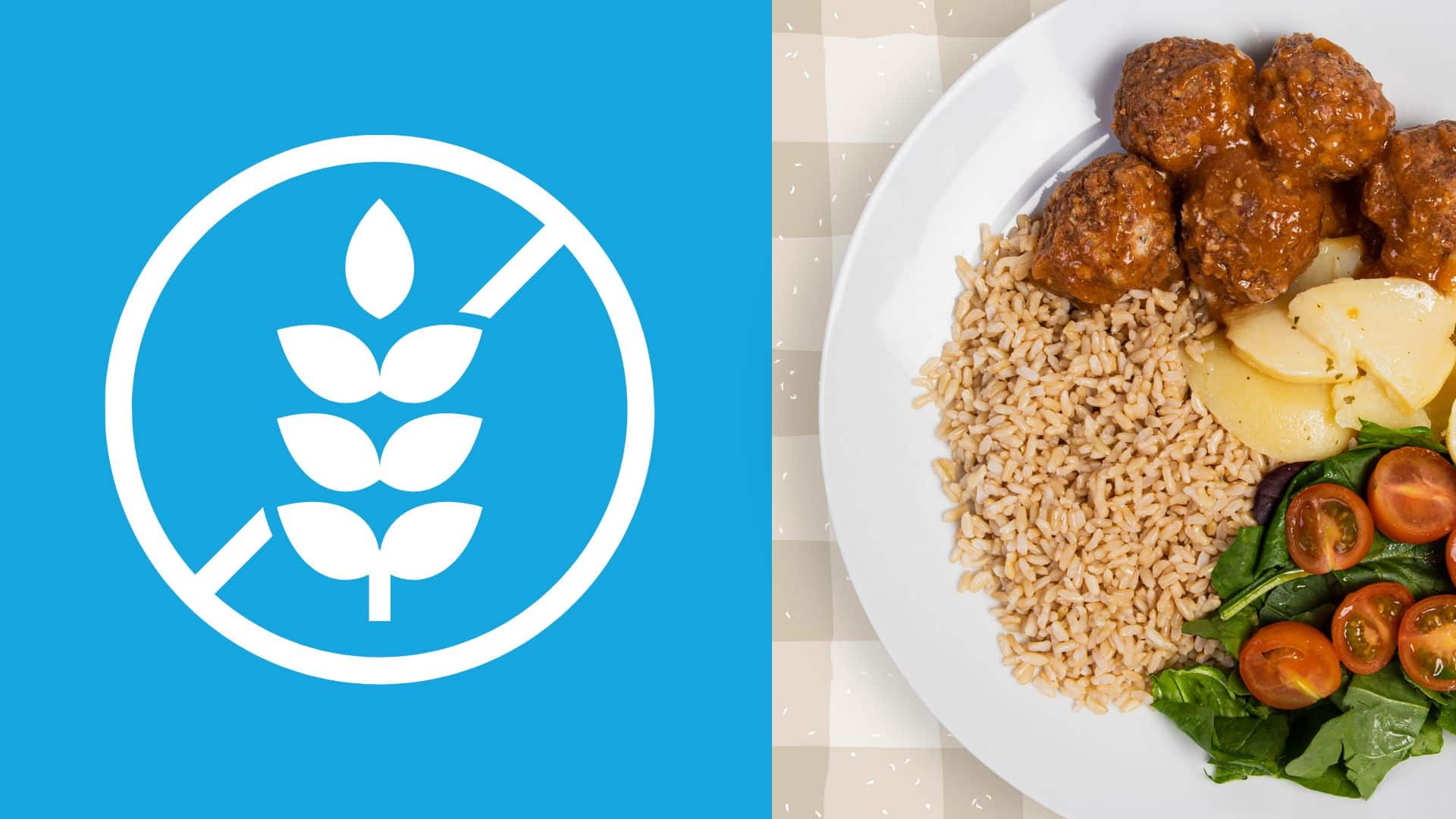
Wheatgrass, the newly sprouted grass of the common wheat plant Triticum aestivum, has been revered as a potent health elixir with many benefits. Known for its vibrant green color and impressive nutritional profile, wheatgrass is packed with vitamins, minerals, enzymes, and amino acids. This nutrient-dense superfood has been praised for its detoxifying properties, immune-boosting capabilities, and various other health benefits. However, it’s important to note that while a few reports and preliminary studies support these claims, extensive scientific research on wheatgrass is still limited. Let’s dig in.
In this post, we discuss the studies so far about wheatgrass, what its purported benefits are, the different forms of wheatgrass, and who should avoid wheatgrass.

Wheatgrass is a nutrient-dense superfood, rich in various vitamins and minerals. It is particularly high in vitamins A, C, and E, as well as iron, calcium, magnesium, and amino acids. Notably, of its 17 amino acids, eight are essential, meaning they must be obtained from dietary sources since the body cannot produce them independently.
Wheatgrass, like all green plants, contains chlorophyll, a green plant pigment known for its potential health benefits. This food is also a great source of antioxidants, including glutathione and vitamins C and E. Antioxidants are important since they neutralize free radicals, protecting cells from damage and reducing oxidative stress. This protection can help guard against various health conditions such as cancer, heart disease, neurodegenerative disorders, and arthritis.
There is research that supports the health benefits of wheatgrass. A study on rabbits fed a high-fat diet found that wheatgrass can reduce oxidative stress and improve cholesterol levels in rabbits. The rabbits also showed increased levels of antioxidants. Another study conducted in test tubes showed that wheatgrass could reduce oxidative damage to cells.
Although these studies are encouraging, it is important to note that they were conducted on animals or in test tubes. More comprehensive human studies are needed to fully understand the effects of wheatgrass and its antioxidants on human health.
Test-tube studies have indicated that wheatgrass, due to its high antioxidant content, may have potential in combating cancer cells. For instance, wheatgrass extract has been shown to decrease mouth cancer cells’ proliferation by 41%, while another study demonstrated its ability to induce cell death and reduce leukemia cell count by up to 65% within three days of treatment.
Preliminary research suggests that wheatgrass juice could lessen the adverse effects of conventional cancer treatment. One study involving breast cancer patients found that wheatgrass juice reduced the risk of chemotherapy-induced bone marrow dysfunction. Despite these findings, there is still a lack of evidence on wheatgrass anti-cancer effects in humans. This highlights the need for further studies to understand its role in cancer prevention and treatment.
Wheatgrass is said to aid in digestion due to its high fiber content and presence of digestive enzymes. These enzymes, such as protease and amylase, help break down proteins and carbohydrates, making nutrient absorption more efficient and reducing the workload of the digestive system. The fiber promotes regular bowel movements, preventing constipation and supporting overall gut health. While a study in 2011 that was performed on diabetic rats supports this claim, the scientific community requires more in-depth study to confirm these digestive advantages for humans.

Cholesterol, a lipid found throughout the body, plays an essential role in bile production and hormone synthesis. However, excessive cholesterol levels can pose risks to cardiovascular health by blocking blood flow.
There have been some promising finds from animal studies that suggest wheatgrass might offer potential in cholesterol management. Research on rats with high cholesterol levels showed that wheatgrass juice led to a significant reduction in total cholesterol, bad (LDL) cholesterol, and triglycerides. This is comparable to the effects of atorvastatin, a commonly prescribed cholesterol-lowering medication.
Another study on rabbits fed a high-fat diet showed that wheatgrass supplementation decreased total cholesterol levels while increasing good (HDL) cholesterol.
While these animal studies show promising effects of wheatgrass on cholesterol levels, further research is needed to assess its effectiveness on humans.
Many people have started adding wheatgrass juice to their diet as a quick way to support weight loss. Wheatgrass contains thylakoids, tiny plant structures that contain chlorophyll, which aids in photosynthesis. While there is no direct evidence that wheatgrass itself promotes weight loss, studies suggest that thylakoids can enhance fullness and aid in weight management.
For example, research has shown that thylakoids can increase feelings of fullness and decrease food intake in both humans and animals. However, these studies used higher concentrations of thylakoids than that found in wheatgrass. Despite this, wheatgrass can still be a valuable addition for weight loss due to its high nutrient content, which provides essential vitamins and minerals without excess calories.
Inflammation, a natural defense mechanism by the immune system, serves to safeguard the body against injury and infection. However, prolonged inflammation has been suggested to contribute to the development of heart disease, cancer, and autoimmune disorders. Some research suggests that wheatgrass can possibly mitigate inflammation.
For instance, a small-scale study of 23 individuals examined the effect of wheatgrass juice on ulcerative colitis, a condition marked by the inflammation of the colon. The patients were instructed to consume just under ½ cup of wheatgrass daily for one month, resulting in lower rectal bleeding and decreased severity of the disease.
As mentioned earlier, wheatgrass is rich in chlorophyll, which is known for its anti-inflammatory properties. Test-tube studies have shown that chlorophyll can inhibit the activity of specific inflammation-triggering proteins and alleviate inflammation in arterial cells. However, current research is primarily on specific wheatgrass compounds or their effects on specific conditions. Further investigation is required into the potential broader anti-inflammatory effect for the general population.

If one wishes to add wheatgrass to their regimen, it is available in various forms to easily incorporate into their diet. Fresh wheatgrass juice is a potent and immediate nutrient boost, best enjoyed as a shot or mixed with other juices. Wheatgrass powder is another popular option, easy to add to smoothies, shakes, or even water. For those with a busy lifestyle or those who dislike the taste of wheatgrass, supplements in a tablet or capsule form provide a convenient way to add it to their diet.
Wheatgrass is generally considered safe for consumption, especially for those who do not have wheat or grass allergies, celiac disease, or gluten intolerance. Since only the seeds of the wheat kernel contain gluten, wheatgrass itself is gluten-free, However, if you have concerns about gluten sensitivity, consult your doctor or opt for certified gluten-free wheatgrass products. Unfortunately, wheatgrass is susceptible to mold growth, especially when grown at home, so it’s important to be vigilant for any signs of spoilage, like bitter taste.
For those who are pregnant or breastfeeding, it is recommended to avoid wheatgrass due to the potential contamination risks. Some people may experience adverse effects like nausea, headaches, or diarrhea after consuming wheatgrass, particularly in juice or supplement form. If you continue to experience negative symptoms, it’s important to consult a healthcare provider or completely remove wheatgrass from your diet.
While wheatgrass and its components have been linked to various health benefits, such as weight management, improved cholesterol levels, and reduced inflammation, there is still a lack of comprehensive human studies to validate these effects. Much of the existing research is conducted on animals or only focuses on individual compounds found in wheatgrass rather than the overall product. Although further research is needed to confirm the benefits of wheatgrass, adding it into a balanced diet could provide additional nutrients and several health advantages. However, wheatgrass should not replace conventional medical care or a balanced diet.

If you’re one of the millions of people who have celiac disease or gluten sensitivities, you know that searching for gluten-free food can be an added dietary challenge. It takes effort to find which foods are safe to eat and which foods can cause negative reactions. Despite this challenge, it is still possible to enjoy …

Does eating a healthy diet require you to give up fast food? Not always. If you choose wisely while placing your fast food order, you can incorporate occasional fast food consumption into a balanced diet. Keep these recommendations in mind. Next time you head to your local fast-food restaurant, these five suggestions can help you make …

If you’ve ever found yourself in the grocery store wondering whether you should pick up a yam or a sweet potato for your next recipe, you’re not alone! Despite the fact that the names are commonly used interchangeably, yams and sweet potatoes are quite different—both in origin and in taste. Origins and family When it …